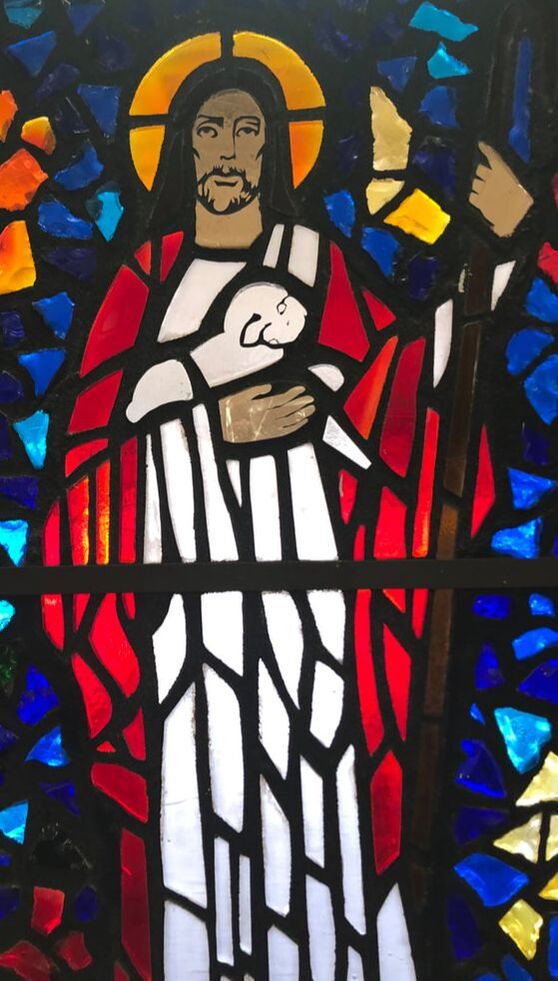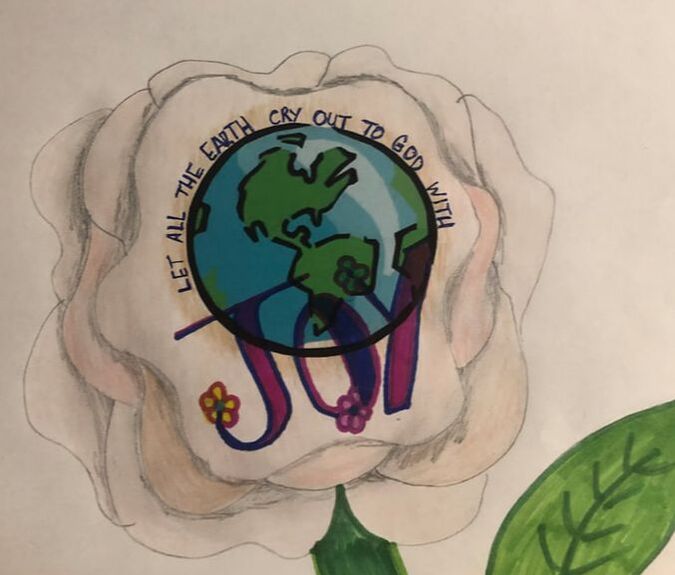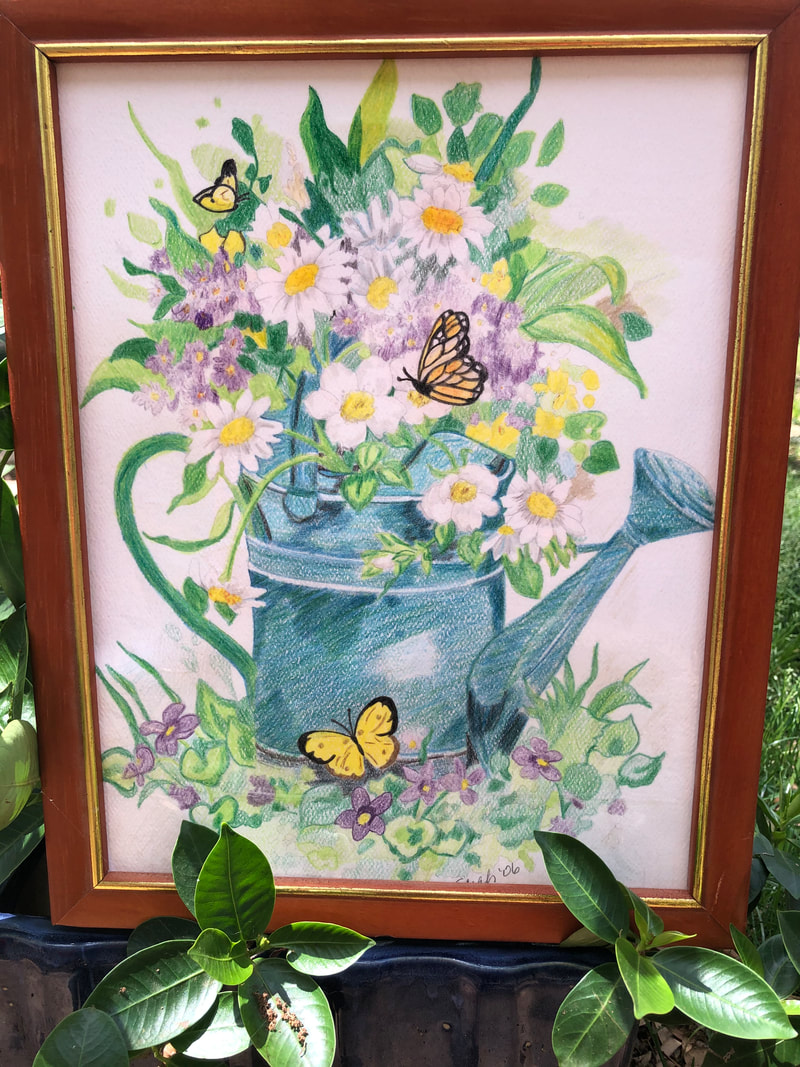|
Eastertide: Day 25 Not only is today the halfway point in the Easter season, it's also the feast day of St. Catherine of Siena! How appropriate that the feast day of the woman who said "Be who God created you to be and you will set the world on fire!" is so close to Pentecost, when the Holy Spirit descended as wind and flames of fire. To learn a bit more about this amazing saint, click this link: St. Catherine of Siena (catholicnewsagency.com) Pray for us, St. Catherine of Siena!
0 Comments
Eastertide: Day 24
We are almost at the halfway point of the Easter season! Are you still filled with joy? Eastertide: Day 22
Yesterday was the fourth Sunday of Easter, also known as "Good Shepherd Sunday." From my years of working with children (of all ages), I have learned to ask this simple question: "If Jesus is the Good Shepherd, who is the flock? Who are the sheep?" Believe it or not, I often get some blank stares. Not everyone understands that Jesus is making an analogy here. Some adults are even a bit insulted, thinking "aren't I a little more than a sheep?" It's always a good question to ask, and it takes a bit of sitting with, of mulling over, of thinking about someone who would lay down his life for you especially when there is an obvious and large distinction of worth: i.e. - a human shepherd is worth more than a fluffy sheep. Jesus the Godman gave up his life for us. Just to be clear - Jesus is the Good Shepherd. We are his flock. Hence the picture above. Eastertide: Day 21 The fourth Sunday of Easter is known as "Good Shepherd Sunday," because the Mass readings for this day contain the infamous statement of Jesus - "I am the Good Shepherd." The article below is written by Paweł Rytel-Andrianik from www.aleteia.org, and gives 3 short points to reflect on for this Sunday. 3 Points to prepare for Mass in 30 seconds. The Gospel for 4th Sunday of Easter is John 10:11-18. 1. Good Shepherd Sunday The fourth Sunday of Easter is celebrated as Good Shepherd Sunday. The Gospel of the Good Shepherd is read throughout the Church on this day. We also pray for vocations to the priesthood and consecrated life. This is an invitation to each of us to join in this prayer not only on this day, but throughout the year. 2. Key Words The good shepherd lays down his life for the sheep. Jesus is the good shepherd and the model for every pastor of how he should give his life for those to whom he is sent. Giving one’s life for others means giving one’s time, strength, ability, attention, living for others and not for oneself. I know my sheep, and my sheep know me. In an Italian parish, the catechist once asked the children to write questions to the Lord Jesus. One of the children asked: “Lord Jesus, are you friends with our priest or do you only know each other from work?” Of course, this applies to each of us: Are we friends with the Lord Jesus? Or do we know Him only by sight. I have other sheep that do not belong to this fold. These also I must lead. Pope Francis is an example of how to look for people on the outskirts, like Jesus who looks for a lost sheep. And when he finds it, he puts it up on his shoulders and brings it into the fold. 3. Today Jesus saw sheep grazing in the poor desert areas and in the fertile pastures of Galilee. He saw shepherds who always walked ahead of the sheep, leading them to the best places. Let us pray for our pastors, that they will courageously and lovingly lead us to Jesus. "There is no other name by which we must be saved!" Eastertide: Day 18 Not only is today the 18th day of the season of Easter, but it's also Earth Day! In honor of Earth Day, here's an appropriate quote from St. Hildegard of Bingen, saint, mystic and a Doctor of the Church. God is the foundation for everything.
Eastertide: Day 17
Back on the 6th day of Easter, I wrote a blog post about the meaning of the Easter Paschal Candle. In this post, I mentioned how beautiful each candle is and how I am always impressed that the artists who design them can come up with new and inspiring designs each year. In fact, thinking about the wide variety of Easter Paschal Candles made me ponder starting a new Pinterest board, just of Paschal Candles. So I did! If you would like to add to the board or just take a closer look at some of these important candles, follow me on Pinterest and meander through the board. Eastertide: Day 16
In the blog post yesterday, I showed a drawing that I colored in about 15 years ago. In keeping with the coloring-as-meditation theme, I'm posting this beautiful drawing of the descent of the Holy Spirit from www.looktohimandberadiant.com, one of my favorite websites for Catholic Religious Education ideas. Pentecost is still far off, on the horizon, so today is good day to download this picture and start working on it. There's still plenty of time to finish it before we will pray "Come, Holy Spirit!"
Eastertide: Day 15
I colored in the picture above close to 15 years ago, way before the current Adult Coloring trend had taken off. It was one of a set of 4 sketched pictures from a color-by-numbers kit. It was my first sustained attempt at a larger coloring project and I like the way it turned out. The reason I include it here, in this celebration of Eastertide, is that I started coloring it a few days after my father died and I was very sad. I was able to sustain the hours of coloring over several days because I found that it helped with my grief. There was something about the gentle dragging of the colored pencils and the gradual appearance of soft color on a white, blank space, that was helpful and calming. I certainly became a believer in the benefits of coloring that we hear about today, because I know it helped me. (BTW, I'm thrilled with the whole Adult Coloring craze. What a healthy way to rediscover our artistic abilities and produce something beautiful, not to mention supporting the very talented artists who create these designs!) As the years passed, this drawing took on a different aspect. Instead of remembering the waves of sadness, it slowly became a sign of hope. After all, it shows a watering can overflowing with spring flowers, vibrant greens and beautiful butterflies. All of these are signs of new life, and specifically, signs of the resurrection. The theme of gardening is one of the more beautiful themes that runs through Scripture, and in fact, Mary Magdalene first thought the risen Christ was a gardener - the prophecy became specific and enfleshed in him, in that garden. Now when I look at this picture, I see a promise. I imagine Jesus' scarred hand holding the handle of the watering can and the water inside is the water that fell from his side, from his heart, pouring out the Holy Spirit onto the earth. This water falls on all of us, and if we respond to it, we will grow into the strong trees, the inspiring flowers, the restful grass - the people we were created to be. Now, when I look at this picture, I think of the future instead of the past, of the day when we will leave this "valley of tears" behind and be reunited with our loved ones in the Garden of Paradise. I have faith that I will see my Dad again. In fact, I hope to see all those I miss who have gone before me, those who died with Jesus and will rise with him. That's the power - and the promise - of Easter.
Although the kit I used is no longer available, you might enjoy one of the kits above.
Eastertide: Day 14 For today's continued celebration of Eastertide, we return to www.thesacredpage.com for a deeper understanding of the Mass readings for today. Seeking a deeper understanding of the Scripture readings we hear each week is one of the most important habits we can create, and certainly a habit that will lead to new understanding, deeper faith, and renewed belief in Jesus' resurrection. "One of my favorite movies is M. Night Shyamalan’s “Signs.” It’s a cross between Robert Benton’s “Places in the Heart” and Roland Emmerich’s “Independence Day,” and probably a couple other movies I’m forgetting at the moment. Anyway, one of the marked features of the movie is its foreshadowing. Shyamalan introduces all sorts of strange themes associated with the different characters who surround Fr. Graham Hess (Mel Gibson), an (Anglican?) priest who’s lost his faith and left his ministry: the strange last words of his dying wife, his brother’s obsession with hitting home runs, his son’s asthma, his daughter’s water-drinking compulsion. The significance of these motifs does not become clear to the viewer until the final scenes, where one discovers that a strong hand of Providence was guiding the life of Fr. Hess through it all.
I see an analogy between Shyamalan’s “Signs” and the convictions of the early Christians about the relationship of the Scriptures to the life, death, and resurrection of Christ. The Passion and Resurrection of Jesus was for the early Church like the final scenes of Shyamalan’s movie: all of a sudden, all sorts of diverse motifs from the Scriptures and the history of salvation made sense. They appeared unified, evidence of a strong hand of Providence that had been leading God’s people to a meaningful, climactic moment of salvation all along. Through the Readings for this Sunday’s liturgy runs the conviction that Christ’s Passion and Resurrection had been foreshadowed all along through Israel’s Scriptures and history. During the Easter Season, the Church reads significant passages from Acts in the First Reading. However, we don’t read Acts ad seriatim (straight through) on Sundays, because that would get us too far “ahead of ourselves” liturgically. After all, in “liturgical time,” we are still waiting for the Ascension (in the seventh week of Easter) and Pentecost (the eighth week after Easter), both of which are recounted in the first two chapters of Acts. So again, the Church reads key passages from Acts in the First Reading, but “hovers around” the beginning of the book, not wanting to get too far ahead. In the Second Readings for this season, the Church works through the First Epistle of John, which is a fundamental catechesis for those young in the faith. This reflects the fact that the Church has admitted new members at the Easter Vigil. Moreover, 1 John is edifying reading for the whole Church, as we renew our faith and baptismal commitment in this season. The Gospel Readings are taken from key passages at the end of the Gospels, recounting events between Easter and Ascension; or else from intensely Christological or Pneumatological pericopes of the Gospel of John, particularly the Last Supper discourse (John 13–17) or the Good Shepherd discourse (John 10:1-18). 1. The First Reading for this Sunday is Acts 3:13-15, 17-19: Peter said to the people: “The God of Abraham, the God of Isaac, and the God of Jacob, the God of our fathers, has glorified his servant Jesus, whom you handed over and denied in Pilate’s presence when he had decided to release him. You denied the Holy and Righteous One and asked that a murderer be released to you. The author of life you put to death, but God raised him from the dead; of this we are witnesses. Now I know, brothers, that you acted out of ignorance, just as your leaders did; but God has thus brought to fulfillment what he had announced beforehand through the mouth of all the prophets, that his Christ would suffer. Repent, therefore, and be converted, that your sins may be wiped away.” Peter says that the suffering of Christ was announced beforehand by all the prophets. Really? Where? It’s true that there are a few passages which seem to predict the suffering of a messianic figure: Isaiah 53 is the famous one, of course; and Daniel 9 speaks of the Messiah being “cut off.” But Peter claims the suffering of the Messiah is widely prophesied in Scripture, not simply hinted at in a couple of texts. One of the keys to understanding St. Peter’s claim is to understand how first century Jews and Christians looked at the Old Testament. Essentially, everything was prophetic or potentially prophetic. Thus, passages that we might consider “law” or “history” were also “prophecy.” Thus, St. John takes a law about the Passover Lamb (“not one of its bones shall be broken,” Ex 12:46; cf. Ps 34:20) and understands it as a prophecy of Jesus (John 19:36). Likewise, the historical account of Isaac, the “beloved” son of Abraham, being sacrificed on the Temple Mount in Genesis 22 is also understood in many places in the New Testament as a prophecy of what would happen to God’s “beloved” Son. But it was especially the psalms that were understood as prophetic. The idea that these sacred songs spoke of the future and of the messiah was not limited to early Christians. The Essenes at Qumran, who left us the Dead Sea Scrolls, understood the Psalms (as well as almost every other part of Scriptures) as describing the End Times, through which they thought they were living. They described David as writing all the psalms “through the Spirit of prophecy” (11QPsalmsA). And, if you read through the Psalms, it will not take long before you begin to recognize a common pattern: the psalmist will speak of suffering death or mortal travail, of descending to “Sheol,” and then toward the end of the Psalm will praise God for saving his life from the “Pit,” of breaking the bonds of “Sheol,” of restoring him to life. Several Psalms follow this apparent death-and-resurrection sequence. Since such a pattern was not literally true of King David, the presumed author, it must be true of someone else: Jesus of Nazareth, the Christ, the Son of David. This is at the core of Peter and Paul’s early preaching (Acts 2, 13), both making use of Psalm 16 especially (“you will not let your Holy One see decay,” Ps 16:10). Peter’s message to his brother Jews, members of the Sanhedrin, in this Sunday’s reading is this: “If you will open your eyes, if you will ponder the Scriptures in light of what Jesus of Nazareth has said and done, you too will be able to see the strong hand of Providence in our Scriptures and history, leading up to this moment of salvation which we have witnessed and now share with you.” Eastertide: Day 12
And now, for a little shot of joy, homemade Easter eggs! We've only started to decorate these hard-boiled eggs in the last couple of years, when my kids are older. Surprisingly to me, they really enjoy making them as teens and young adults. I enjoy all the colors, the lack of stress (because they are too old to make a mess with the dye), being together with them, and, of course, the symbolism of new life. Believe it or not, all of these eggs will be eaten in about 2 - 3 days. |
The BlogDisclaimer:
The images on this website are either my own or are used under the Creative Commons license. No images have been edited, shared, or adapted. A link to each work that I do not own is provided at the bottom of the page. CC License: Archives
March 2024
Categories
All
|













 RSS Feed
RSS Feed
